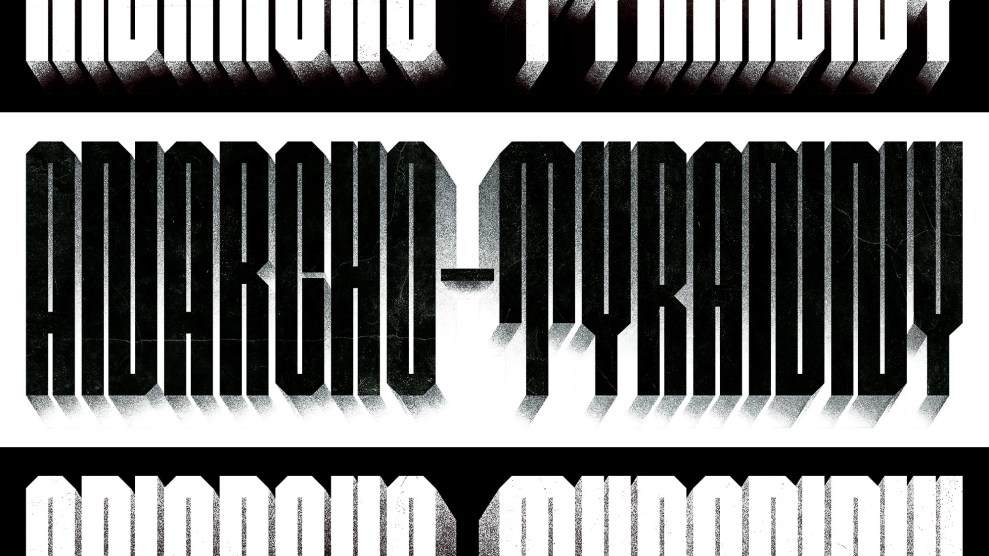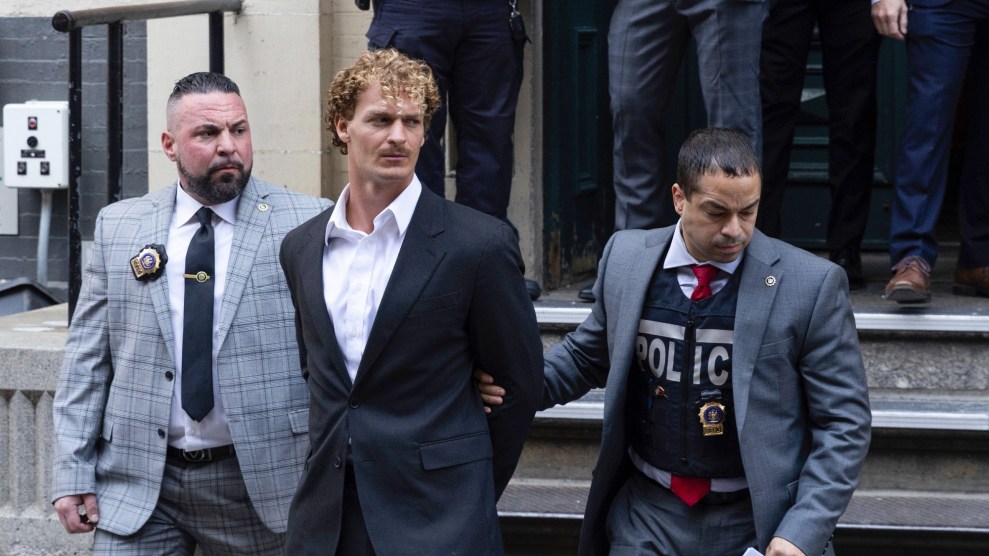
Rafa Goicoechea
The same day Manhattan District Attorney Alvin Bragg charged Daniel Penny with manslaughter for choking to death Jordan Neely—a homeless man who’d been acting in a way Penny perceived as threatening—Rep. Matt Gaetz (R-Fla.) recorded a podcast. Elites, he told listeners, were making the common man fearful of defending himself while allowing criminals to roam free. The congressman had a name for this inversion of justice: “anarcho-tyranny.”
For a certain kind of right-wing shitposter with intellectual pretensions—Tim Pool, Mike Cernovich, the New York Young Republican Club—invoking the specter of anarcho-tyranny was obligatory after Penny’s arrest. The portmanteau signaled that you’d done the reading (or at least listened to a podcast by someone who had) and recognized the real oppressed: an ill-defined middle class caught between anarchy from below and tyranny from above. The term lent an academic gloss to a gut reaction.
Anarcho-tyranny has become a favorite expression for proponents of a new populism on the right. Tucker Carlson has used it to explain everything from the prosecution of Kyle Rittenhouse to Democrats’ nonchalant reaction to classified documents at the Penn Biden Center. A few weeks before Fox News fired him, Carlson mused, “It does seem like anarcho-tyranny is one of these ideas, you know, that some political philosopher thought up a long time ago.”
Well, no. The expression belongs to Sam Francis—the late paleoconservative columnist whose disgust with establishment Republicans, managerial elites (of any party), and the idea of a majority-minority America has led him to be widely cited by intellectuals of the MAGA movement. Francis’ idea was not that anarcho- tyranny was an age-old problem, but rather that it was the product of an “entirely new form of government” that was “unique in human history.”
In a 1994 article, Francis proclaimed that a first-of-its-kind “Hegelian synthesis” had been created by the upper class as the 20th century closed. This perversion forced the aggrieved masses to live under both anarchy and tyranny at once. In North Carolina, he explained, a “law-abiding citizen” was arrested as part of a media stunt to improve seatbelt enforcement even as violent criminals were being let out of state prisons on parole. (Francis did not mention that the prison releases resulted from a state law enacted in 1987 to prevent extreme overcrowding caused by record arrest numbers.) Here, he suggested, was a government imposing on us while allowing them to do as they pleased.
And the identities of us and them were clear: Francis wrote from a home office that was once Robert E. Lee’s childhood bedroom. He was pushed out of the right-wing Washington Times in 1995 for, essentially, being too bigoted. He obsessed over any restrictions that could touch a middle-class white person: speed limits, the tax code, gun laws, and even child porn statutes. But he often ignored other oppressions enforced by the state: slavery, Jim Crow, and generations of deliberate economic dispossession.
Francis’ anarcho-tyranny is the lens through which the blurry rage of MAGA comes into focus. When Sen. J.D. Vance (R-Ohio) complains about a “lunatic” in New York getting away with harassing a white family as Donald Trump is hounded over a hush-money case, it can seem like an age-old tale of liberal hypocrisy. But as Carlson made clear earlier this year, the New Right sees progressive elites as engaged in something far more sinister. “What they’re describing is a caste system,” Carlson explained, “where they can do what they want, and you are subject to the minutiae of their legal code. It’s called anarcho-tyranny.”
Francis did have a solution. Order could be restored, he argued, not by police but via a return to something else: frontier vigilantism. He even had a modern example of this justified resistance: Bernhard Goetz, the man who shot four Black teenagers on the subway in 1984 after one of them reportedly said, “Give me 5 dollars.” Francis hailed the subway vigilante for “picking off” the “hoodlums.” (All of the kids survived, though one was paralyzed.) “I wanted to kill those guys,” Goetz confessed. “If I had more bullets, I would have shot them all again and again.”













